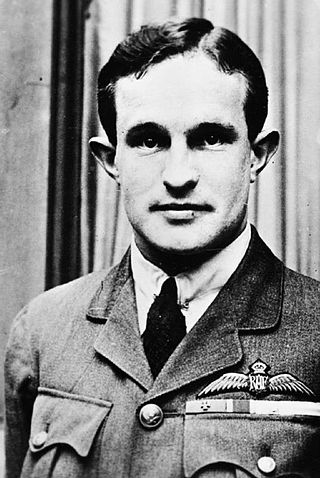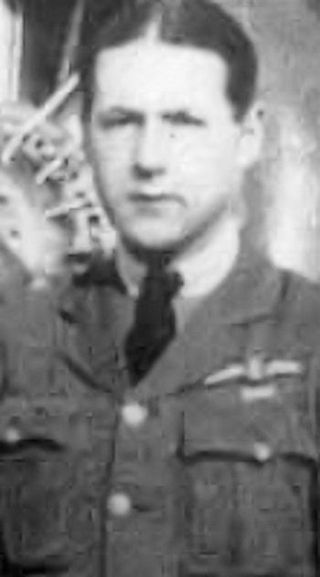Related Research Articles

Andrew Frederick Weatherby (Anthony) Beauchamp-Proctor, was a South African airman and a recipient of the Victoria Cross, the highest award for gallantry in the face of the enemy that can be awarded to British and Commonwealth forces. He was South Africa's leading ace of the First World War, being credited with 54 aerial victories.

Erich Loewenhardt was a German soldier and military aviator who fought in the First World War and became a fighter ace credited with 54 confirmed aerial victories. Originally enlisting in an infantry regiment even though he was only 17, he fought in the Battle of Tannenberg, winning a battlefield commission on 2 October 1914. He would serve in the Carpathians and on the Italian Front before being medically discharged in mid-1915. Following a five month recuperation, Loewenhardt joined the Imperial German Air Service in 1916. After serving as an aerial observer and reconnaissance pilot, he underwent advanced training to become a fighter pilot with Jagdstaffel 10 in March 1917. Between 24 March 1917 and 10 August 1918, Loewenhardt shot down 45 enemy airplanes, as well as destroying nine observation balloons. Shortly after his final victory, he was killed in a collision with another German pilot.
Thomas Falcon Hazell & Bar was a fighter pilot with the Royal Flying Corps, and later, the Royal Air Force during the First World War. Hazell scored 43 victories in 1917–18 making him the fifth most successful British "flying ace" of the war, and the third most successful Irish-born pilot, behind Edward Mannock and George McElroy, as well the only pilot to survive the war from both groups.
Frank Ormond "Mongoose" Soden DFC & Bar was a First World War flying ace and RAF commander during the Second World War.
Lieutenant Cecil Robert Thompson was a South African World War I flying ace credited with six aerial victories.
Lieutenant Eric Walker was a British World War I flying ace credited with six aerial victories.
Captain Sidney William Highwood was a British World War I flying ace and balloon buster credited with sixteen aerial victories.

Lieutenant Kenneth Russell Unger was an American World War I flying ace credited with fourteen aerial victories. His candidacy rejected by his own nation, Unger applied to the British Royal Flying Corps for military pilot training in June 1917. Once trained, he was assigned to the Royal Naval Air Service (RNAS). As the RNAS was merged into the Royal Air Force, Unger scored his aerial victories between 26 June and 1 November 1918. In later life, Unger remained involved in aviation and served again during World War II. He also joined the U.S. Navy Reserves, rising to the rank of rear admiral.
Lieutenant Gavin Lynedoch Graham DFC, LdH, CdG was a South African World War I flying ace credited with thirteen confirmed aerial victories.
Second Lieutenant Francis James Ralph was a British World War I ace credited with 13 confirmed aerial victories over German fighter aircraft while flying as an aerial observer.
Lieutenant William Thomas Barnes was an English World War I flying ace. He served as an observer/gunner in Bristol F.2 Fighters, gaining, in conjunction with his pilots, nine confirmed aerial victories over German Fokker D.VII fighter planes. Post-war he served in the Royal Irish Constabulary and was killed in the Kilmichael ambush on 28 November 1920.
Captain William Stanley Jenkins was a Canadian flying ace during World War I. He was officially credited with 12 aerial victories, having scored his first two while still on sick leave.
Captain Roy Manzer, was a Canadian World War I flying ace credited with 12 official aerial victories. After his aerial military service, he returned to Canada and a long and distinguished legal and civic career.
Group Captain Norman William Reginald Mawle was a British World War I flying ace. He was credited with 12 official aerial victories during the First World War. During World War II, he returned to his country's service, not retiring until 1954.
Captain John Steel Ralston was a Scottish World War I war hero and flying ace. After winning a Military Cross in 1916 for lifesaving gallantry while serving in the infantry, he was credited with 12 official aerial victories as a fighter pilot before he was killed in action.
Dudley Lloyd-Evans, was a Welsh-born soldier, airman and flying ace. After being decorated for his infantry service during the First World War, he transferred to aviation, was credited with eight official aerial victories, and again won military honours for his valour. He remained in the Royal Air Force until the end of the Second World War.
Colonel Dennis Edward Francis Waight was a British Army professional infantryman. After being decorated for valor while serving as a fusilier early in World War I, he flew in combat as an aerial observer until war's end. No details of his transfer and training are known; however, he was credited with 12 aerial victories, making him a flying ace.
Captain John Stevenson Stubbs DFC AFC was an English First World War flying ace credited with 11 official victories. He was a pioneering bomber pilot who was the war's leading ace for the British Airco DH.9. He also carried off the rather unusual feat of destroying an enemy observation balloon with a bomber.
Major Richard Burnard Munday was an English flying ace credited with scoring nine aerial victories during World War I. He was notable for scoring Britain's first night victory; he also excelled as a balloon buster at the rare feat of shooting down enemy observation balloons at night.
Sergeant James Grant was a Scottish flying ace credited with eight aerial victories during World War I. The teenage non-commissioned officer was a rarity among aces. While most were commissioned officers and fighter pilots, he was an observer and gunner aboard a bomber. Nonetheless, his accuracy with a machine gun and his doughtiness led to his being awarded the Distinguished Flying Medal when he was only 18 years old.
References
- ↑ "Clement Boothroyd". The Aerodrome. Retrieved 18 January 2018.
- ↑ Franks, Norman; Guest, Russell; Alegi, Gregory (25 August 2008). Above the War Fronts: The British Two-seater Bomber Pilot and Observer Aces, the British Two-seater Fighter Observer Aces, and the Belgian, Italian, Austro-Hungarian and Russian Fighter Aces, 1914-1918. Grub Street. p. 6. ISBN 978-1898697565.
- ↑ "No. 32353". The London Gazette (Supplement). 10 June 1921. pp. 4697, 4699.
- ↑ "No. 32776". The London Gazette . 12 December 1922. p. 8799.
- ↑ "No. 33229". The London Gazette . 14 December 1926. p. 8187.
- ↑ "No. 31170". The London Gazette . 8 February 1919. p. 2035.